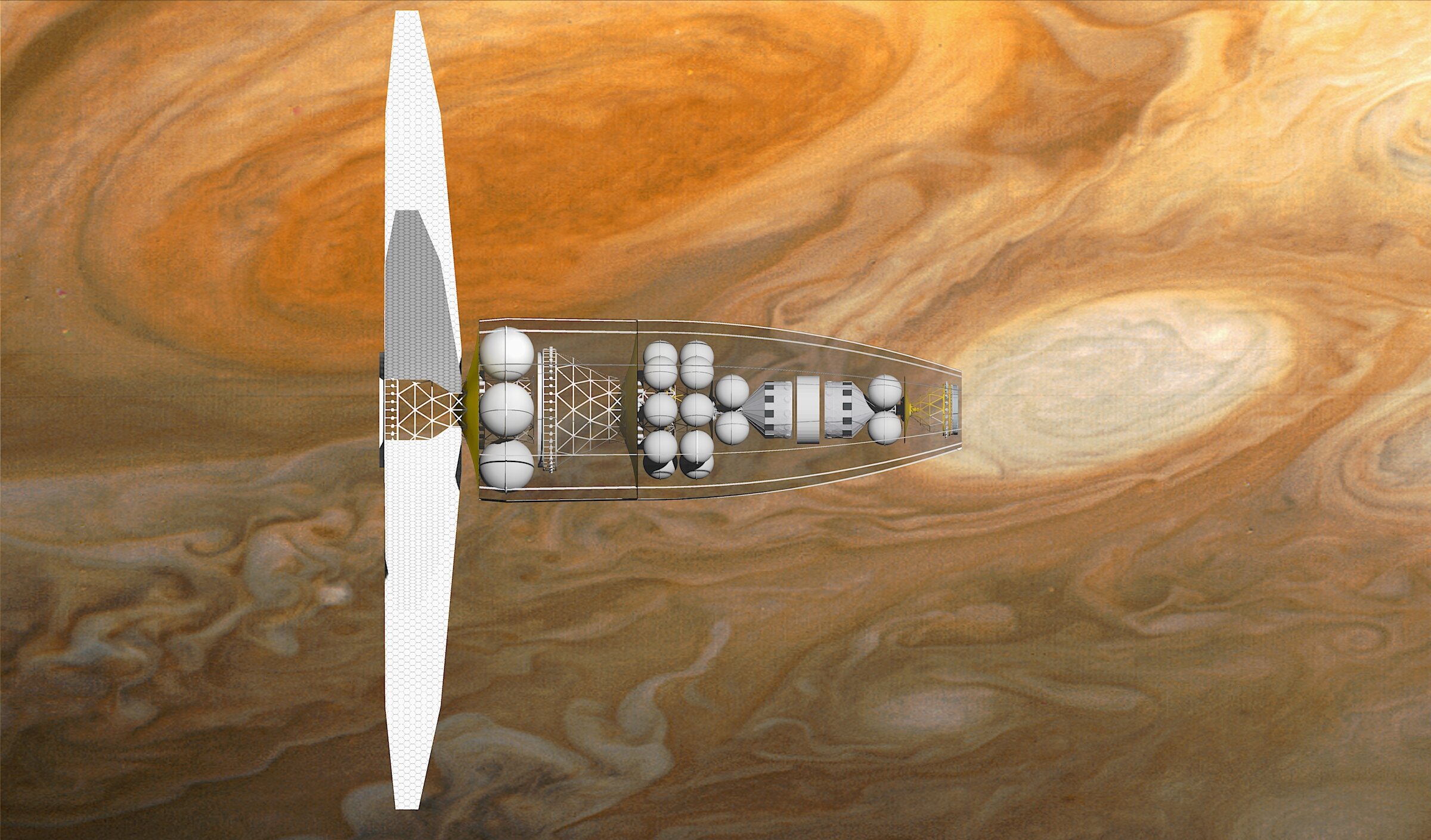In 2012 a paper was published for a conceptual design study relating to Project Icarus. The concept was called the ‘Leviathan’, and the idea was to maximise performance on the dv for both the acceleration and deceleration phase, but also to minimise maturity timescales for development by minimising the amount of individual fuels. The paper was written by K. F. Long, A. Crowl, A. Tziolas and R. Freeland and was titled “Project Icarus: Nuclear Fusion Space Propulsion & The Icarus Leviathan Concept” (Space Chronicle, 65, 1, 2012).
Project Icarus Leviathan Starship (Michel Lamontagne)
In particular, one of the issues with the historical 1970s Project Daedalus design was its 50,000 tons of Deuterium and Helium-3 fuel, the latter of which would constitute 30,000 tons of the total fuel mass. So instead, Leviathan would only utilise 15,000 tons of Helium-3, but would make up the difference by also utilising other fuels. It was thought that this might ease the system architecture requirements.
The acceleration would be started by the use of 25,000 tons Deuterium-Deuterium fuel which would burn for 0.5 years taking the spacecraft up to 2.04% of the speed of light. Alternatively, it would use anti-proton induced catalysed fusion reactions on the Deuterium. It would then switch to a Deuterium-Helium-3 burning reaction, with 10,000 tons of fuel, which it would burn for 1.0 years taking the vehicle up to a cruise speed of 4.25% of the speed of light. This would enable the mission to be completed in under a century (with the deceleration included), delivering a 150,000 tons payload.
The deceleration phase would involve a proton/Boron engine burn of 3,000 tons of fuel, for a duration of 0.5 years taking the cruise speed back down to 3.87% of the speed of light. The vehicle would then deploy a Medusa sail to bring the total speed down to 1.77% of the speed of light; this is a large spinnaker based sail design based on the ideas of J. C. Solem, such as in his published paper “Nuclear Explosive Propulsion for Interplanetary Travel: Extension of the Medusa Concept for Higher Specific Impulse” (JBIS, 47, pp.229-238, 1994). The remaining deceleration would be achieved via a MagSail system, that pushes back against the outgoing charged particles and electromagnetic fields of the local stellar wind. This would bring the vehicle speed down to around 1% of the speed of light.
Eventually the spacecraft would arrive at its assumed Centauri A/B target. It would also deploy an on-board maser to eject several 1 tons Starwisp probes into the local stellar system for multi-planetary monitoring to ensure full coverage of all three stars and their associated planets. This would be based on similar technology to that suggested by R. Forward in his paper “Roundtrip Interstellar Travel Using Laser-Pushed Lightsails” (J. Spacecraft & Rockets, 21, pp.187-195, 1984).
Just like the Daedalus starship, its likely that design concepts like Leviathan do not represent the vehicle configurations we eventually send to the stars. Indeed, one of the criticisms of the Leviathan concept is its multi-modal system also allows for many failure modes. However, it is fun to consider these ideas and to think about how different technologies can be mated together. In the end, it is the integration of different technologies to high efficiency that will make or break any starship design.


